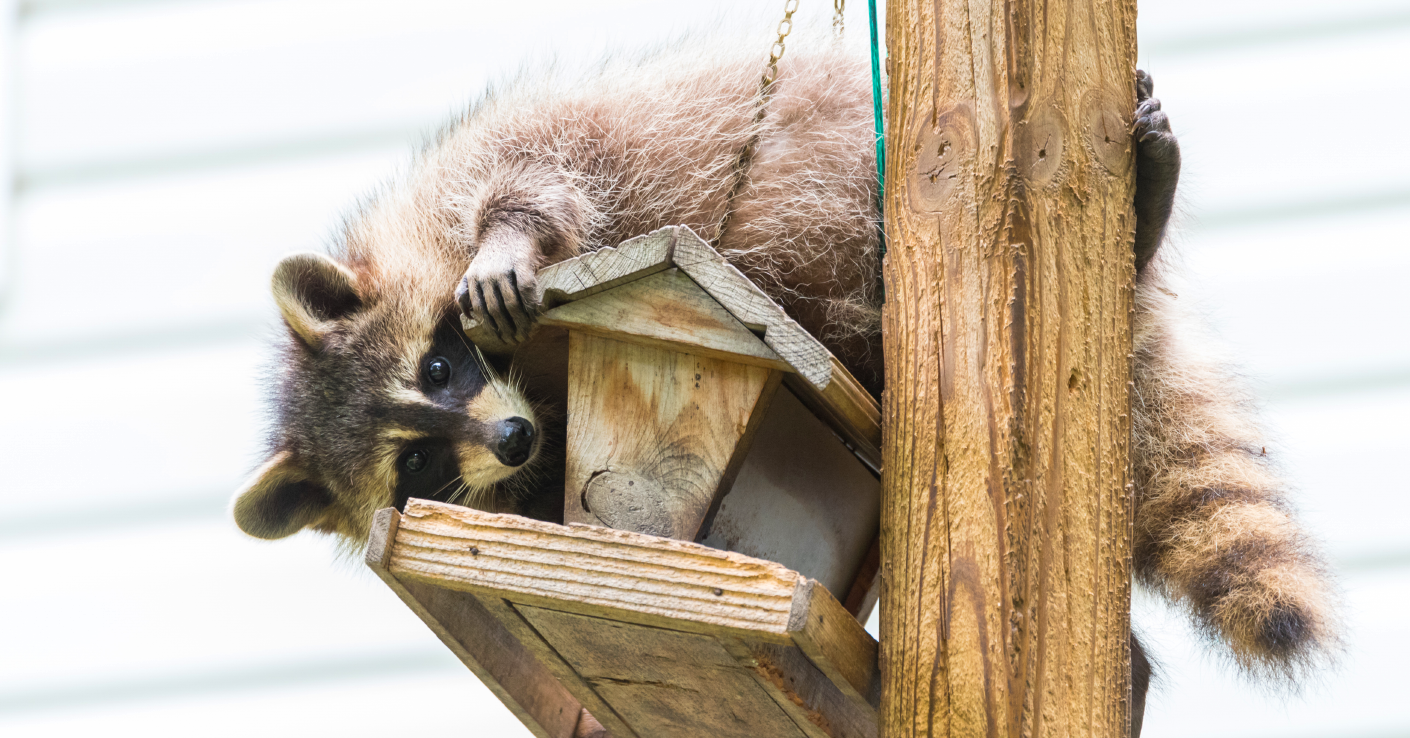
Raccoons are adorable troublemakers, whose success at adapting to just about any habitat is remarkable. But as seen in recent news, not everyone feels about raccoons the way we do – and even our patience gets tested when a fresh tomato becomes a midnight snack, or it sounds like a party under the back deck.
That’s why The Fur-Bearers have put together four tips for homeowners to make living with our local raccoons a little bit easier – and it all has to do with managing ourselves, not the animals.
- Managing attractants. The first step in preventing or ending any conflict is to identify what it is the animal in question finds so tantalizing about the area, and most of the time, it’s something they want to eat. Fallen fruits, outdoor pet food, exposed waste or trash, and even recyclables that still have morsels of food on them can bring raccoons up close to your house. Take a look around your property for attractants and remove them – and remember that an overflowing bird feeder will attract animals of pretty much every species (including small rodents, birds of prey, and predators).
- Managing deterrents. Raccoons are clever, and we people forget that from time to time. Setting up a single deterrent, like motion activated lights or sprinklers, noise makers, or the bleach-on-a-rag trick may work for a short while, then seem to fizzle out. It’s important to try new deterrents and rotate them so wildlife who want to call your home their home don’t get used to them. Remember to never use any deterrent that could cause harm to an animal.
- Managing access. Porches and sheds are favourite den sites for raccoons, and cutting off the access points with screens (available at most hardware stores) is the easiest solution. It’s a good idea to check various points around your home (chimneys, roof hatches, loose shingles, vents) with every seasonal change to see if any critters have tried to or succeeded in finding their way in – and make sure no one is inside before you close them off. Please also be aware of building code and municipal regulations on covering access points, as well.
- Managing expectations. Look, we know you’re handy, and we know you love the animals. But sometimes it’s best to admit defeat and call in the experts. Numerous humane wildlife companies exist across North America (we’re personally fans of AAA Wildlife Control in Vancouver and the Lower Mainland, andAAA Gates' Wildlife Control in Toronto and Southern Ontario) that can safely, compassionately remove animals from unsafe parts of your property. Always ask for referrals, and investigate to make sure they’re truly humane.
Fur-bearers like raccoons are learning to live with us. Isn’t it fair that we learn to live with them?
monthly donor(for as little as $10/month – the cost of two lattes) pleaseclick hereand help us save lives today.

